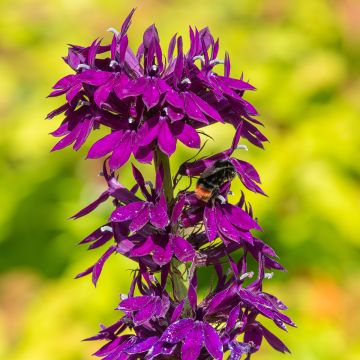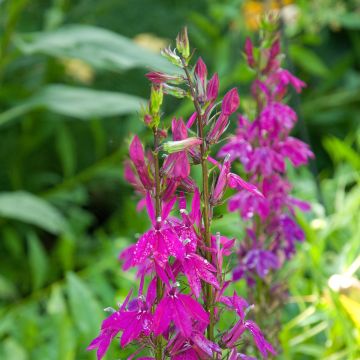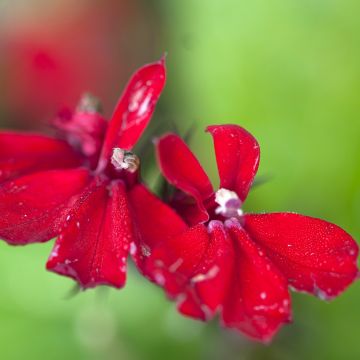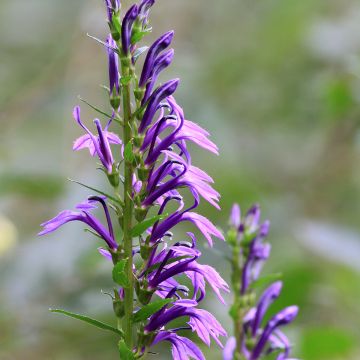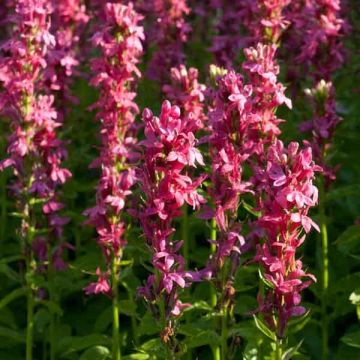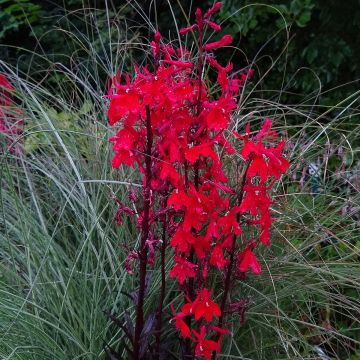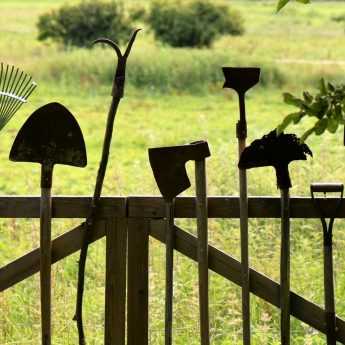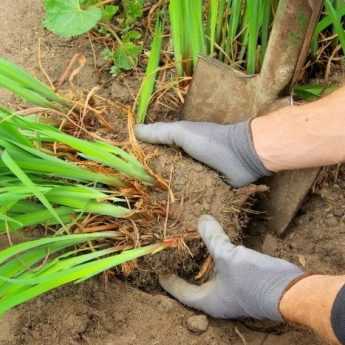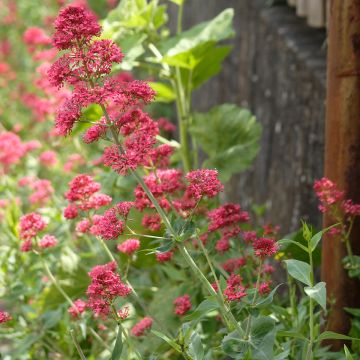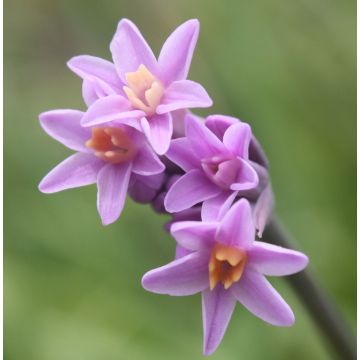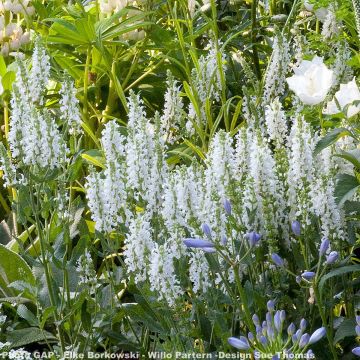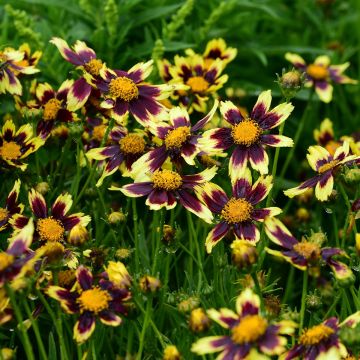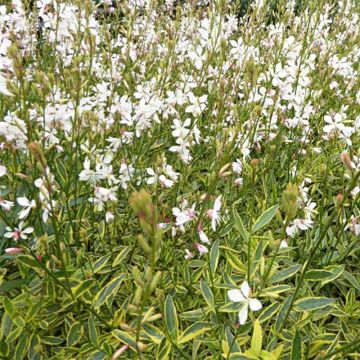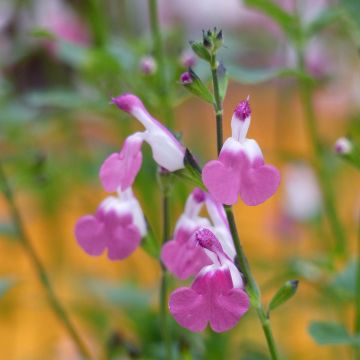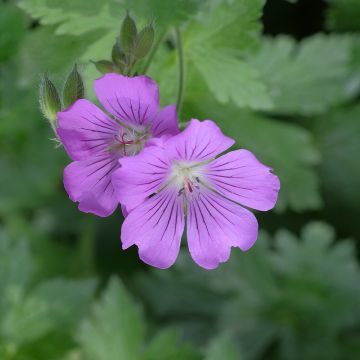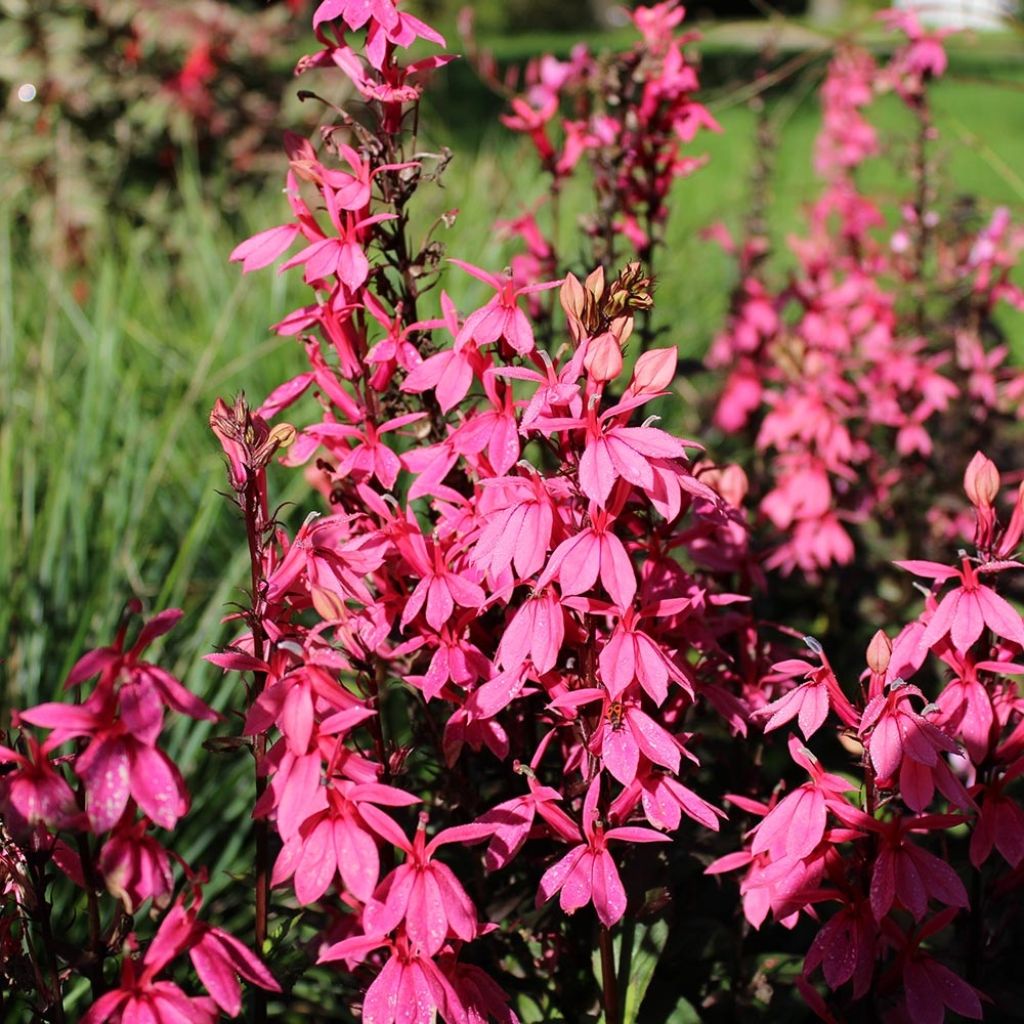

Lobelia speciosa Fan Salmon
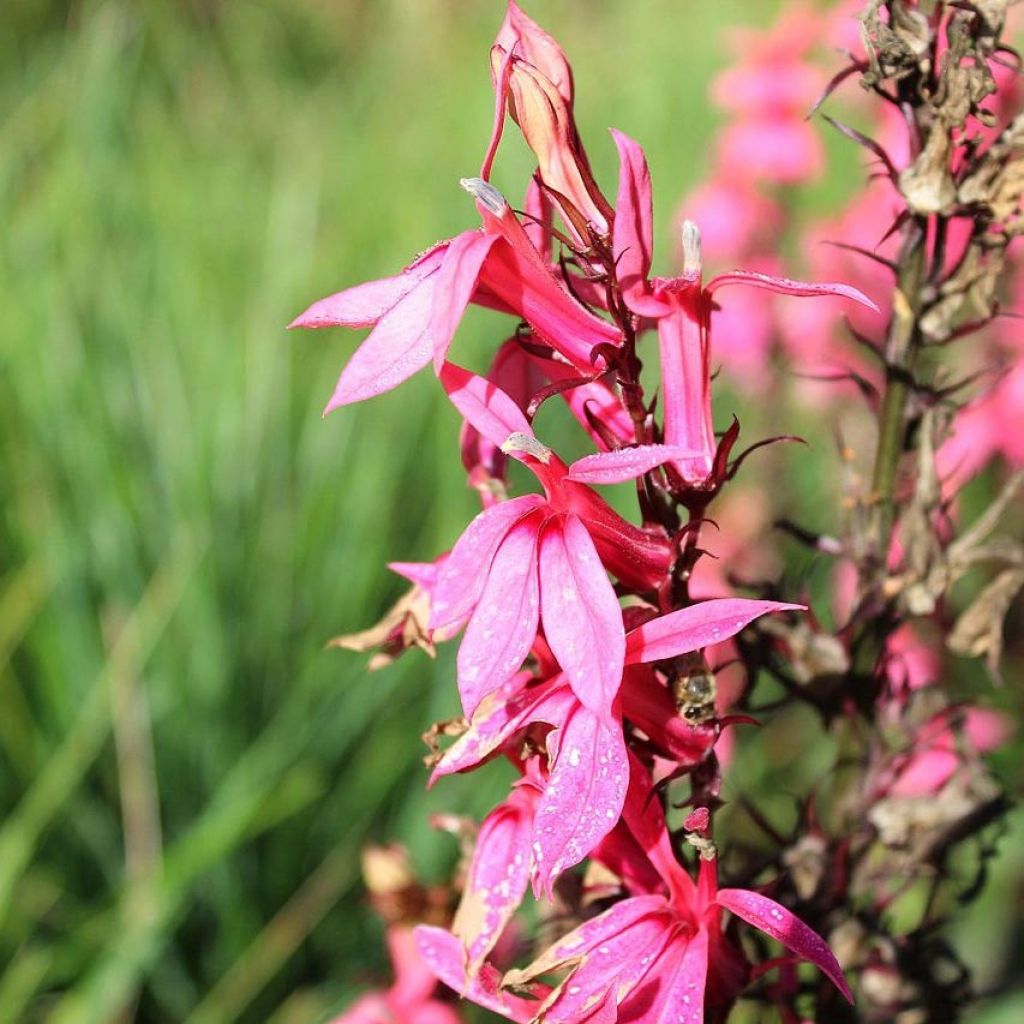

Lobelia speciosa Fan Salmon
Lobelia speciosa Fan Salmon
Lobelia x speciosa Fan Salmon
Garden Lobelia, Cardinal Flower
This item cannot be shipped to the selected country
Delivery charge from €6.90
More information
Delivery charge from €6.90
More information
Schedule delivery date,
and select date in basket
This plant carries a 12 months recovery warranty
More information
We guarantee the quality of our plants for a full growing cycle, and will replace at our expense any plant that fails to recover under normal climatic and planting conditions.
From €7.90 for pickup delivery and €6.90 for home delivery
Express home delivery from €8.90.
Does this plant fit my garden?
Set up your Plantfit profile →
Description
The Lobelia hybrid 'Fan Salmon' is a remarkable perennial that will liven up flower beds from summer to late season; very floriferous from July to September, it is also interesting for the unusual coloration of its foliage combining green, bronze, and purple. The plant forms a beautiful clump of upright and sturdy leafy stems, resistant to wind, adorned with numerous flowers beautifully cut in salmon pink, more intense at the center of the corolla, remarkably bright, noticeable from afar in the garden. This excellent variety is easy to grow in full sun or partial shade, in deep, fertile, and relatively moist garden soil. It is a good companion for wood sage (Salvia nemorosa) and perennial delphiniums.
The Lobelia Fan Salmon belongs to the family of Campanulaceae. It is a horticultural hybrid resulting from cross-breeding between several botanical species: Lobelia.gerardii, L. cardinalis, L. fulgens, and L. siphilitica. It is a deciduous herbaceous plant, perennial from its stump, with aerial vegetation disappearing in winter. Combining the qualities of its parents, this Fan Salmon hybrid is a fast-growing variety, relatively hardy (-10/-12°C at its coldest) and very floriferous in ordinary soil.
From a rosette of purple-red leaves, a clump of upright and sturdy stems, 70 cm (28in) in height, develops in spring, adorned with entire, ovate-lanceolate leaves. Initially purple when very young, these leaves turn greener during the season but retain a strongly bronzed coloration. From July, the stems bear numerous flowers with 2-lipped corollas divided into 5 small lobes resembling leaves, light as butterflies, whose colour, very vibrant, is a pink salmon hue. This flowering continues until the first frosts in October.
The Lobelia x speciosa Fan Salmon will have a beautiful effect when planted in large clumps in a perennial bed or near a water feature, where it will appreciate the very moist soil in summer. It can also be grown in a pot on the terrace or balcony, with careful attention to watering and fertilizing. For example, pair it with the Delphinium grandiflorum sinensis, an absolutely delightful perennial larkspur, with white foxgloves (Digitalis purpurea Alba), and place a bugbane (Cimicifuga Brunette) in the background, somewhat sheltered from the sun. This perennial also pairs well with the Chelone obliqua.
Lobelia speciosa Fan Salmon in pictures
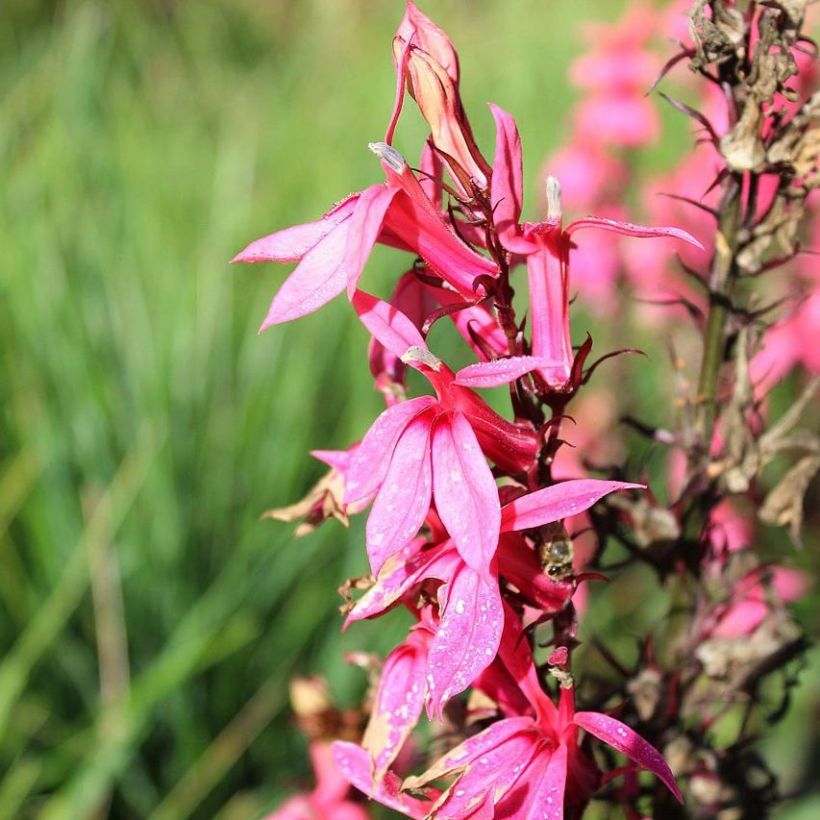

Flowering
Foliage
Plant habit
Botanical data
Lobelia
x speciosa
Fan Salmon
Campanulaceae
Garden Lobelia, Cardinal Flower
Cultivar or hybrid
Other Lobelia
View all →Planting and care
The Lobelia hybrid Fan Salmon is preferably planted in spring. It will appreciate a good deep, loose, fertile garden soil, without excessive limestone, remaining moist to wet in summer. Heavy soil is appreciated, but it harms the hardiness of the plant. It is generally accepted that hybrid lobelias speciosa can withstand short frosts of around -10 to -12°C: consider placing a thick protective mulch on its stump in cold regions. The plant does not require staking. Cut dry stems in late winter. The only drawback with hybrids is that they can sometimes be short-lived; the stumps hollow out and rot. To perpetuate your lobelia, divide it at least every two years, as the main stump generally has a short lifespan, regardless of its hardiness. Peripheral rosettes can be easily taken and transplanted.
Planting period
Intended location
Care
Planting & care advice
This item has not been reviewed yet - be the first to leave a review about it.
Fast maturing perennials
Haven't found what you were looking for?
Hardiness is the lowest winter temperature a plant can endure without suffering serious damage or even dying. However, hardiness is affected by location (a sheltered area, such as a patio), protection (winter cover) and soil type (hardiness is improved by well-drained soil).

Photo Sharing Terms & Conditions
In order to encourage gardeners to interact and share their experiences, Promesse de fleurs offers various media enabling content to be uploaded onto its Site - in particular via the ‘Photo sharing’ module.
The User agrees to refrain from:
- Posting any content that is illegal, prejudicial, insulting, racist, inciteful to hatred, revisionist, contrary to public decency, that infringes on privacy or on the privacy rights of third parties, in particular the publicity rights of persons and goods, intellectual property rights, or the right to privacy.
- Submitting content on behalf of a third party;
- Impersonate the identity of a third party and/or publish any personal information about a third party;
In general, the User undertakes to refrain from any unethical behaviour.
All Content (in particular text, comments, files, images, photos, videos, creative works, etc.), which may be subject to property or intellectual property rights, image or other private rights, shall remain the property of the User, subject to the limited rights granted by the terms of the licence granted by Promesse de fleurs as stated below. Users are at liberty to publish or not to publish such Content on the Site, notably via the ‘Photo Sharing’ facility, and accept that this Content shall be made public and freely accessible, notably on the Internet.
Users further acknowledge, undertake to have ,and guarantee that they hold all necessary rights and permissions to publish such material on the Site, in particular with regard to the legislation in force pertaining to any privacy, property, intellectual property, image, or contractual rights, or rights of any other nature. By publishing such Content on the Site, Users acknowledge accepting full liability as publishers of the Content within the meaning of the law, and grant Promesse de fleurs, free of charge, an inclusive, worldwide licence for the said Content for the entire duration of its publication, including all reproduction, representation, up/downloading, displaying, performing, transmission, and storage rights.
Users also grant permission for their name to be linked to the Content and accept that this link may not always be made available.
By engaging in posting material, Users consent to their Content becoming automatically accessible on the Internet, in particular on other sites and/or blogs and/or web pages of the Promesse de fleurs site, including in particular social pages and the Promesse de fleurs catalogue.
Users may secure the removal of entrusted content free of charge by issuing a simple request via our contact form.

































